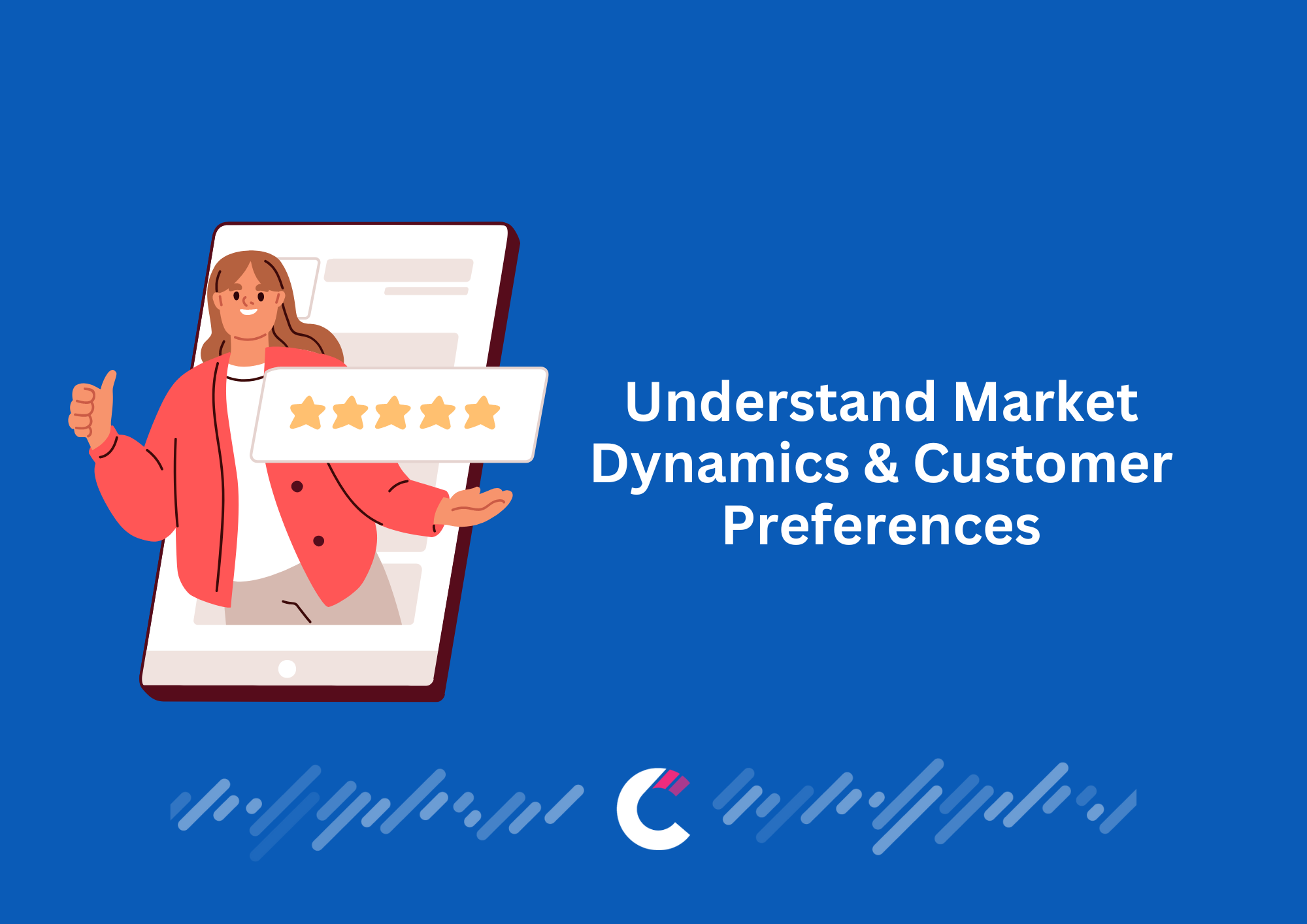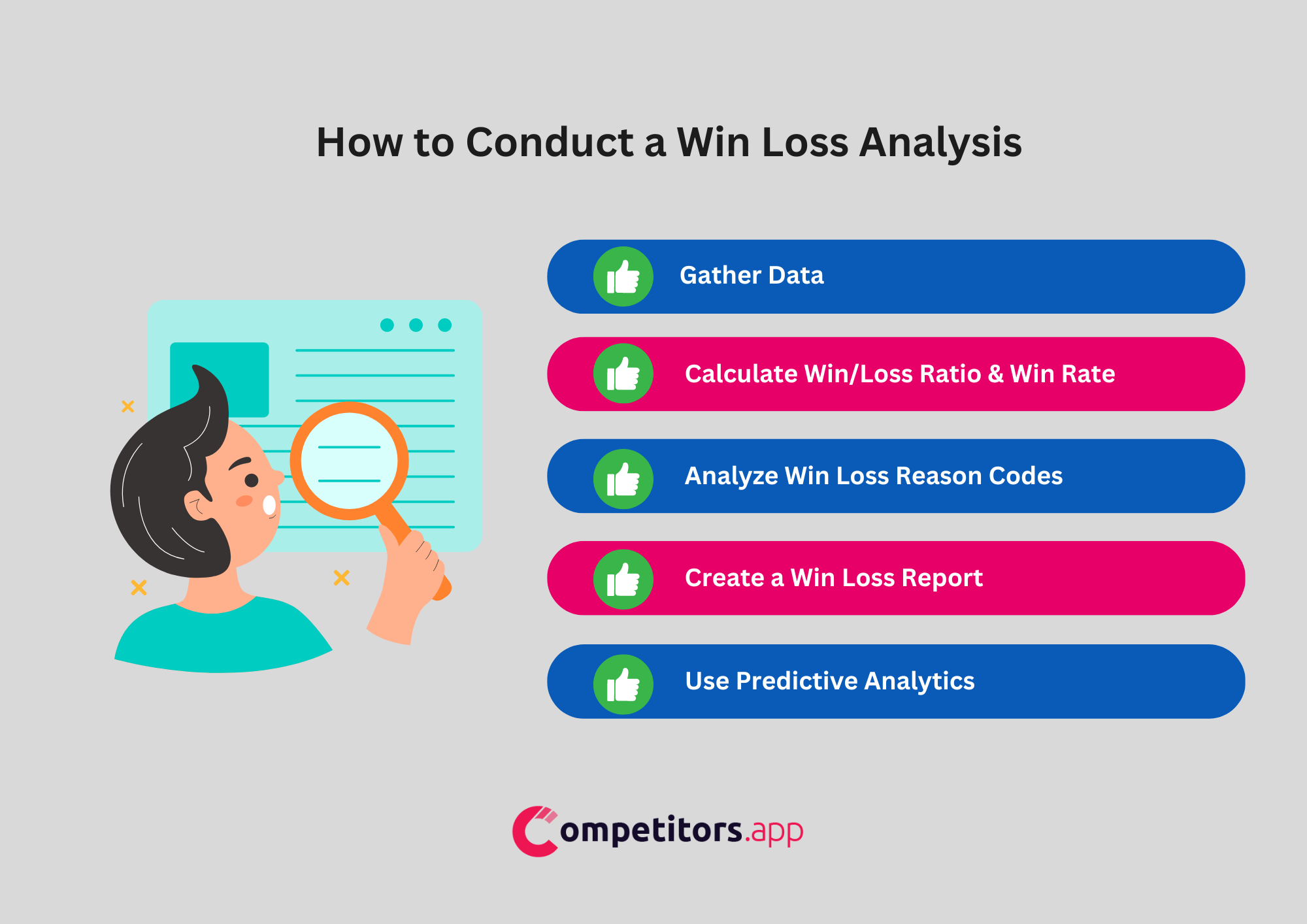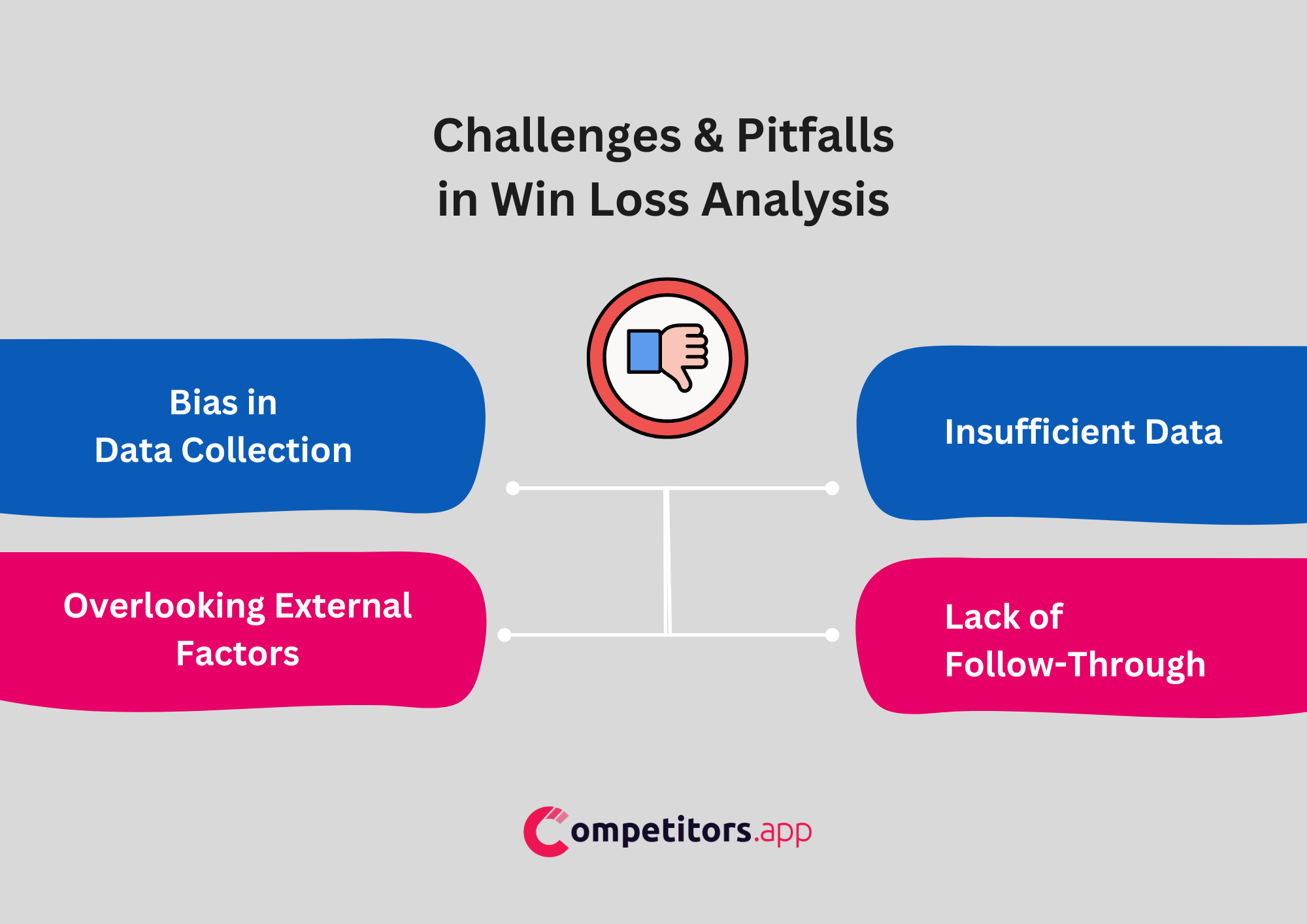
Win loss analysis, a strategy as straightforward as its name suggests, has evolved into a critical instrument for businesses aiming to dissect their sales outcomes. This method, which balances on the scales of wins and losses, offers a magnifying glass through which companies can scrutinise their sales processes, identify competitive insights, and pivot strategies accordingly. Historically, the concept of win/loss analysis might have been as simple as tallying successes against failures. Yet, its transformation into a sophisticated analytical tool reflects the complex nature of today’s market dynamics. The journey from a rudimentary count to a detailed examination encapsulates the evolution of competitive intelligence over the years. By diving into why deals were won or lost, organisations unlock a treasure trove of insights, propelling them towards refined strategies and enhanced customer engagement.
Win loss analysis serves as a critical tool for companies looking to navigate through the competitive environment of business. Essentially, it is a structured process that involves the examination and analysis of sales deals to determine why they were won or lost. This process goes beyond merely tallying outcomes; it seeks to uncover the reasons behind each success or failure. Every deal outcome is influenced by a variety of factors, such as product features, pricing strategy, sales team performance, or competitors’ actions.
The strength of win loss analysis comes from its capability to transform these outcomes and reasons into valuable data. By analysing why deals were successful or not, companies can extract insights crucial for refining their strategies. This method offers a detailed review of the sales cycle, from the first interaction to the final decision, helping businesses identify their strengths and weaknesses.
Think of a situation where a company frequently loses deals due to pricing issues. At first glance, this might indicate a need to adjust prices. However, a more thorough analysis might show that the real issue is not the price but how customers perceive the value of the product or service offered. Through this understanding, win loss analysis does more than highlight problems; it guides companies towards effective solutions, proving itself as an essential strategy for any business seeking to maintain a competitive edge and grow.
Factors that can be considered in a win/loss analysis include:
The purpose of win/loss analysis is to deeply understand the reasons behind sales successes and failures, guiding companies in refining their sales strategies. It aims to enhance decision-making by revealing customer preferences, market trends, and competitive insights. This analysis helps in aligning products and services with customer needs, improving sales effectiveness, and increasing conversion rates. It also provides insights into sales team performance, marketing strategy impact, and pricing competitiveness. By identifying specific areas for improvement, such as sales follow-up processes or product feature emphasis, companies can optimize operations and market positioning. Ultimately, win/loss analysis equips businesses with the knowledge to refine strategies, leading to improved results and customer satisfaction.


Firstly, win/loss analysis provides an objective basis for understanding market dynamics and customer preferences. By systematically reviewing why deals were won or lost, companies gain insights into the external factors influencing their sales outcomes. This knowledge is invaluable for staying ahead of market trends and customer demands.
Secondly, it fosters a culture of learning and adaptation within organizations. The process of conducting win/loss analysis encourages teams to critically assess their strategies, tactics, and performance. This introspective approach promotes a mindset geared towards seeking out opportunities for improvement and innovation.


Additionally, win/loss analysis enhances customer-centricity. It compels companies to listen closely to customer feedback and understand the buyer’s journey from an outside-in perspective. This focus on customer experience and satisfaction is essential for building strong, lasting relationships and achieving customer loyalty.
Moreover, the insights garnered from win/loss analysis can drive strategic decision-making across various aspects of the business, from product development to marketing and sales strategies. It helps in identifying areas where resources can be allocated more effectively to address weaknesses and capitalize on strengths.
Embarking on win loss analysis unlocks a plethora of advantages for businesses, each contributing to a more informed and strategic operational approach. This analysis not only illuminates the path to enhanced sales performance but also fosters a deeper connection with customers and a stronger competitive stance in the marketplace.
Gaining Valuable Insights
At the heart of win loss analysis is the extraction of critical insights about the sales process, customer behavior, and market dynamics. These insights enable businesses to understand the underlying reasons for their sales outcomes, providing a foundation for strategic adjustments. By identifying patterns and trends in wins and losses, companies can tailor their approaches to better meet customer needs and preferences.


Enhancing Competitive Strategies
Another key benefit is the improvement of competitive strategies. Win loss analysis offers a clear view of how a company’s products or services stack up against the competition. This understanding allows businesses to fine-tune their offerings, differentiate themselves in the market, and effectively counter competitors’ moves.
Improving Sales Processes
Through win loss analysis, companies can pinpoint inefficiencies and obstacles within their sales processes. This scrutiny leads to the optimization of sales tactics and strategies, ensuring that sales teams are not only more efficient but also more effective in their engagements with prospects and customers.


Marketing Insights
Furthermore, win loss analysis provides valuable feedback for marketing efforts. It reveals how well marketing messages resonate with the target audience and which channels are most effective. This information is crucial for refining marketing strategies, ensuring that they align with customer expectations and preferences.
The theory behind win loss analysis is grounded in the systematic evaluation of sales engagements to drive continuous improvement and strategic growth. This analytical approach is based on the premise that every sales interaction, whether resulting in a win or a loss, holds valuable lessons that can inform future strategy.
At its core, the theory posits that understanding the “why” behind sales outcomes enables organizations to replicate success and avoid past mistakes. It emphasizes the importance of learning from every deal by dissecting the factors that influenced the customer’s decision. This could range from product features, pricing, and sales tactics to broader market trends and competitive dynamics.
One of the fundamental concepts of win loss analysis is the feedback loop. By integrating feedback from wins and losses into the strategic planning process, companies can adapt more swiftly to changes in customer preferences and market conditions. This feedback loop encourages a culture of transparency and accountability, where successes are celebrated, and losses are viewed as opportunities for growth.
Another key aspect of the theory is its focus on actionable insights. The goal is not merely to collect data but to derive insights that can directly influence decision-making and strategy formulation. This requires a deep dive into the specifics of each deal, including the sales approach, customer interactions, and competitor analysis.
The theory also underscores the importance of cross-functional collaboration. Insights from win loss analysis are most impactful when they inform not just sales strategies but also product development, marketing, customer service, and other areas of the business. This holistic approach ensures that improvements are made across the board, leading to a stronger, more cohesive strategy that is aligned with customer needs and market demands.
In summary, win loss analysis revolves around the continuous collection and analysis of sales data to uncover insights that drive strategic improvements. It promotes a culture of learning, adaptation, and cross-functional collaboration, all aimed at enhancing overall business performance and customer satisfaction.

Competitive intelligence plays a pivotal role in the effectiveness of win loss analysis by providing a broader context to understand sales outcomes. It involves gathering, analyzing, and applying information about competitors, market conditions, and industry trends. This intelligence is crucial for companies to not only comprehend their own strengths and weaknesses but also to anticipate and react to moves made by their competitors.
One of the key benefits of integrating competitive intelligence into win loss analysis is the ability to uncover the strategies and tactics used by competitors. This insight allows companies to adjust their own strategies to better compete in the marketplace. By understanding what competitors are offering, how they are positioning their products, and their sales tactics, businesses can identify areas where they need to improve or differentiate their offerings.
Competitive intelligence also helps companies understand their positioning in the market relative to their competitors. This knowledge is vital for developing strategies that leverage a company’s unique strengths and mitigate its weaknesses. It enables businesses to craft value propositions that resonate more effectively with their target audience, thereby improving their win rates.
Furthermore, competitive intelligence allows companies to stay ahead of market trends and shifts in customer preferences. By analyzing win loss data in the context of broader market dynamics, businesses can anticipate changes and adapt their products, services, and sales strategies accordingly. This proactive approach can be a significant advantage in fast-moving industries where staying ahead of trends is critical for success.
Incorporating competitive intelligence into win loss analysis enhances strategic decision-making by providing a comprehensive view of the competitive landscape. It enables companies to make informed decisions about product development, marketing strategies, and sales approaches based on a deep understanding of the market and their competitors.
In the realm of win loss analysis, leveraging the right tools and software can significantly enhance the efficiency and effectiveness of the process. These technologies offer sophisticated functionalities that streamline data collection, analysis, and reporting, enabling businesses to glean actionable insights more swiftly and accurately.
Tools | About | Pricing |
| Starter suit – €25/user/monthly Professional – €80/user/monthly Enterprise – €165/user/monthly Unlimited – €330/user/monthly Unlimited plus+ – €500/user/monthly | |
| Professional – €792/monthly Enterprise – €3.300/monthly | |
| Contact sales | |
| Standard – contact sales Preferred – contact sales Premium – contact sales | |
| Business – €19.90/competitor/monthly Business plus – €29.00/competitor/monthly Custom – contact sales | |
| ||
| ||
|
One of the primary benefits of win loss analysis tools is their ability to automate and streamline the data collection process. These tools can integrate with CRM (Customer Relationship Management) systems, sales databases, and other data sources to gather comprehensive information on sales deals, customer interactions, and market trends. This automation not only saves time but also reduces the likelihood of errors associated with manual data entry.
Win loss analysis software often comes equipped with advanced analytical capabilities, including AI and machine learning algorithms. These technologies can identify patterns and trends within the data that might not be immediately apparent. For instance, they can uncover common characteristics of won deals or pinpoint specific reasons for losses across different market segments. This deep analysis provides a solid foundation for strategic decision-making.
Another advantage of these tools is their ability to generate customizable reports and dashboards. Users can tailor these reports to focus on specific areas of interest, such as win/loss ratios by product line, region, or sales representative. This customization ensures that stakeholders have access to relevant, actionable insights that directly support their strategic objectives.
Moreover, win loss analysis tools often feature collaboration functionalities, allowing team members from different departments to contribute to and access the analysis. This fosters a more integrated approach to strategy development and implementation, ensuring that insights are shared across the organization and informing decisions across sales, marketing, product development, and customer service.

Conducting a win loss analysis involves a structured approach that spans several key steps, each designed to uncover insights into why sales opportunities are won or lost. This process not only helps in refining sales strategies but also enhances overall business performance by focusing on continuous improvement.
The most important step when conducting a win-loss analysis is collecting the right data. The most common data that are analyzed are:
Start by collecting comprehensive sales data, including details of won and lost deals, deal size, sales cycle length, and competitor involvement. This data forms the foundation of the analysis, providing a clear view of the sales landscape.
Feedback from prospects and customers who have been through the sales process is invaluable. It offers direct insights into the factors that influenced their decision-making, such as product features, pricing, and the quality of the sales engagement.
Understanding the characteristics of the companies you’re selling to, such as industry, company size, and geographic location, can highlight trends and patterns in wins and losses.
Analyzing marketing data, including campaign engagement and lead sources, can reveal how marketing efforts impact sales outcomes and contribute to wins or losses.
Calculating the win/loss ratio and win rate provides a quantitative measure of sales effectiveness. These metrics offer a baseline for comparison over time and across different segments.
The win loss ratio is calculated by dividing the number of won deals by the number of lost deals. This ratio helps in assessing the overall effectiveness of the sales strategy.
The win rate is calculated by dividing the number of won deals by the total number of deals (won and lost). This percentage reflects the efficiency of the sales process.
Analyzing win rates and win/loss ratios in the context of specific competitors can uncover competitive strengths and weaknesses.
Segmenting win rates by buyer persona helps in understanding which customer segments are most receptive to your offerings.
Evaluating win rates by lead source can identify the most effective channels for generating high-quality leads.

Identifying and analyzing the reasons behind won and lost deals is critical. This involves categorizing feedback and sales data into reason codes, such as price, product features, sales experience, and competitor offerings.

Before diving into the analysis, it’s important to define what success looks like. This includes setting goals for the win loss analysis, such as identifying areas for improvement, increasing win rates, or enhancing customer satisfaction.

Conducting interviews with customers and prospects who have been through the sales process can provide deep insights. These interviews should be structured to uncover the reasons behind their decisions.

Selecting the right people to conduct the interviews is crucial. Interviewers should be unbiased and skilled in eliciting candid feedback.

Developing a set of standardized questions ensures that each interview covers the key areas of interest and generates comparable data.

After collecting and analyzing the data, organize the findings into actionable insights. This involves categorizing the data, identifying patterns, and prioritizing areas for action.

The final step is to translate the insights from the win loss analysis into actionable strategies. This includes making adjustments to the sales process, product offerings, pricing strategies, and marketing efforts.

Unlocking the insights hidden in your sales data is now easier with our free Win Loss Analysis Template, available through competitors.app. This template is designed to guide you through the process of conducting a comprehensive win loss analysis, helping you to systematically uncover the reasons behind your sales outcomes.

Collect and Prepare Your Data
Start by gathering all relevant data from your win loss analysis template. This includes details on sales outcomes (wins or losses), deal size, sales cycle length, competitor involvement, customer feedback, and any identified reasons for the sales outcome. Ensure this data is cleaned and organized for analysis.
Analyze the Data
Dive into the data to identify patterns, trends, and correlations. Look for common characteristics among won deals and differences in lost deals. This might involve analyzing how deal size, sales cycle length, or specific competitor involvement correlates with wins or losses. Use statistical methods to validate these findings for reliability.
Summarize Insights
Based on your analysis, summarize the key insights. Highlight factors most commonly associated with wins or losses, any surprising trends in the data, and potential areas for improvement in the sales process. This summary will form the core of your Win Loss Report.
Recommendations and Action Plan
Translate your insights into actionable recommendations. This might include strategies for addressing common reasons for lost deals, suggestions for capitalizing on strengths identified in won deals, and any opportunities for sales process optimization.
Report Presentation
Format your findings and recommendations into a clear, concise Win Loss Report. Use visual aids like charts and graphs to illustrate key points. Ensure the report is accessible to stakeholders, with actionable insights clearly highlighted.
Integrating Data Science Techniques
Leverage data science techniques to deepen your analysis. This involves using machine learning models to predict sales outcomes based on the variables captured in your win loss analysis template.
Cluster Analysis
Use cluster analysis to segment wins and losses into meaningful groups. This can reveal distinct patterns or characteristics of deals that are more likely to win or lose, informing targeted strategies for different segments.
Deriving Insights from Data Science
The insights gained from data science techniques can provide a more nuanced understanding of sales dynamics. Predictive models can forecast potential outcomes of future deals, NLP can reveal the underlying reasons for customer decisions, and cluster analysis can identify specific areas for strategic focus.
Questions to Guide Data Science Application
When applying data science to win/loss analysis, consider the following questions to guide your approach:

Predictive analytics enhances win/loss analysis by using historical data to predict future sales outcomes, shifting from a reactive to a proactive strategy approach. The process includes:
This streamlined approach allows businesses to forecast sales results and tailor strategies for improvement effectively.

To maximize the effectiveness of win loss analysis and ensure it delivers actionable insights, adhering to a set of best practices is essential. These practices not only streamline the analysis process but also enhance the quality and applicability of the findings.
1. Start with Clear Objectives
Define what you aim to achieve with the win loss analysis. Setting clear, measurable objectives at the outset guides the focus of your analysis and ensures that the outcomes align with your strategic goals.
2. Ensure Comprehensive Data Collection
Gather data from a variety of sources to get a holistic view of each sales opportunity. This includes sales data, customer feedback, competitor information, and market trends. The more comprehensive your data, the more accurate and insightful your analysis will be.
3. Maintain Objectivity
Approach the analysis with an unbiased mindset. Objectivity is crucial for accurately identifying the reasons behind wins and losses, free from preconceived notions or internal biases.
4. Focus on Actionable Insights
While it’s important to identify trends and patterns, the ultimate goal is to uncover insights that can directly inform strategy and action. Prioritize findings that offer clear, actionable pathways for improvement.
5. Foster Cross-Functional Collaboration
Win loss analysis should not be siloed within the sales team. Engage stakeholders from marketing, product development, customer service, and other relevant departments. This cross-functional collaboration ensures a more comprehensive analysis and facilitates the implementation of findings across the organization.
6. Communicate Findings Clearly
Present the analysis in a clear, concise, and accessible format. Tailor the communication of your findings to suit the audience, ensuring that stakeholders at all levels can understand and act on the insights provided.
7. Implement Findings and Monitor Progress
The real value of win loss analysis comes from acting on the insights. Develop a plan to implement the recommendations, assign responsibility for action items, and set timelines. Equally important is establishing a mechanism for monitoring progress and measuring the impact of changes made.
8. Regularly Update the Analysis
Market conditions, customer preferences, and competitive landscapes are constantly evolving. Regularly conducting win loss analysis ensures that your strategies remain relevant and effective over time.
9. Leverage Technology
Consider using specialized tools and software for win loss analysis. These can automate data collection, streamline analysis, and provide advanced analytics capabilities, enhancing the efficiency and depth of your insights.
10. Learn and Adapt
View win loss analysis as an ongoing learning process. Each analysis offers lessons that can refine your approach, not just to sales, but to how you do business as a whole. Be prepared to adapt strategies based on new insights and continuously strive for improvement.

Conducting win loss analysis is a powerful way to gain insights into sales performance and market positioning. However, it’s not without its challenges and potential pitfalls. Recognizing and addressing these issues upfront can significantly enhance the effectiveness of the analysis and the value of the insights gained.
One of the most significant challenges is ensuring the objectivity of the data collected. There’s a tendency to focus more on wins or to interpret data in a way that confirms pre-existing beliefs. It’s crucial to approach data collection and analysis with neutrality, seeking a balanced understanding of both wins and losses.
Another pitfall is basing the analysis on an inadequate amount of data, which can lead to misleading conclusions. Ensure that the data set includes a sufficient number of cases to provide statistical significance and a true reflection of sales performance.
Failing to consider external factors, such as market shifts or competitor actions, can skew the analysis. It’s important to view wins and losses within the broader context of the industry and market dynamics.
Perhaps the most critical pitfall is failing to act on the insights generated. Without implementation, even the most thorough analysis is of little value. Ensure that findings lead to concrete actions and that there’s a plan for monitoring the impact of these actions.

One way to mitigate bias and enhance objectivity is to involve third-party experts in conducting the analysis. External consultants can provide an unbiased perspective and may also bring additional expertise and benchmarking data.
Utilizing advanced analytics tools and software can help address issues of data sufficiency and accuracy. These tools can automate data collection and analysis, ensuring a more comprehensive and accurate dataset.
Creating a culture that values learning from both successes and failures can help overcome resistance to acknowledging and acting on the findings of win loss analysis. Encourage openness and view every outcome as an opportunity for improvement.
To ensure follow-through, assign clear responsibilities for implementing recommendations and set realistic deadlines. Regularly review progress and adjust strategies as necessary based on results and evolving market conditions.
Win loss analysis, when effectively implemented, can lead to transformative changes in companies, propelling them towards greater success. The following real-life examples illustrate the power of win loss analysis in uncovering valuable insights that drive strategic improvements and competitive advantage

Clearbit utilized win-loss analysis from Clozd to focus on enhancing product adoption and customer retention, diverging from the common sales and marketing perspective to a product-centric view. This analysis led to the launch of two new products in 2023—AI-powered categorization and Global Coverage—significantly improving their service in EMEA, APAC, and Latin America based on customer feedback. Through objective, third-party facilitated feedback and data-driven product development, Clearbit achieved a notable increase in buyer empathy and customer retention, marking over a 10% improvement in gross retention rate (GRR) quarter over quarter. For a detailed overview, you can read the full case study [here]

Calendly collaborated with Clozd to establish a comprehensive win-loss analysis program, conducting over 150 interviews in two years to glean insights across the organization. The program aimed to enhance Calendly’s win rate, secure a sustainable competitive edge, and understand the specifics behind their sales outcomes. Through meticulous planning, cross-functional engagement, and continuous refinement, the program successfully informed product strategy, sales processes, and customer onboarding, leading to significant organizational value and engagement from various teams. This collaborative effort underscores the importance of strategic insight in fostering company-wide improvements and competitive advantages. For a detailed overview, you can read the full case study [here]
Win loss analysis emerges as a pivotal tool for businesses aiming to refine their sales strategies and secure a competitive edge. By delving into the reasons behind sales successes and failures, it offers deep insights that guide actionable improvements, enhancing customer alignment and market performance. The process, exemplified by real-life success stories, highlights its transformative potential—leading to increased market share, customer satisfaction, and overall business success. In the constantly evolving business landscape, win loss analysis not only facilitates a retrospective understanding of past actions but also charts a course for future achievements, underscoring its critical role in strategic planning and continuous improvement efforts.
Companies should conduct win loss analysis regularly, with the frequency depending on the volume of sales and the pace of market change. Quarterly or bi-annually is common, allowing for timely adjustments to strategies.
Absolutely. Small businesses can benefit significantly from win loss analysis by gaining insights into their sales processes, understanding customer preferences, and identifying competitive strengths and weaknesses, which are crucial for growth and improvement.
Win loss analysis focuses specifically on understanding the reasons behind sales outcomes (wins and losses), while customer feedback surveys may cover a broader range of topics regarding customer experience and satisfaction. Win loss analysis provides more targeted insights into the sales process and competitive positioning.
Companies can gather data for win loss analysis through various means, including CRM systems, sales team feedback, customer interviews, and surveys. Integrating multiple data sources ensures a comprehensive view of the sales process and outcomes.
Key metrics include win/loss ratio, win rate, average deal size, sales cycle length, and reasons for wins and losses. These metrics provide quantitative insights into sales performance and underlying factors.
Yes, win loss reason codes can be industry-specific, reflecting unique market conditions, customer needs, and competitive dynamics. Customizing reason codes for the industry can enhance the relevance and accuracy of the analysis.
Customer feedback is crucial in win loss analysis as it offers direct insights into the reasons behind their decisions. It helps identify strengths to build on and areas for improvement in products, services, and the sales process.
Win loss analysis is scalable and can be conducted by small businesses with limited resources. Even simple analyses based on interviews and basic sales data can provide valuable insights for strategic adjustments.
Data science techniques such as statistical analysis, machine learning models, and predictive analytics can be used to uncover deeper insights from win loss data, identify patterns, and forecast future sales outcomes.
Companies ensure the privacy and security of data by adhering to data protection laws, using secure data storage solutions, anonymizing personal information, and implementing strict access controls and encryption methods.
Companies adapt their strategies based on win loss analysis findings by identifying actionable insights and making targeted improvements to their sales process, product offerings, marketing strategies, and customer engagement practices. Regular review and adjustment ensure strategies remain aligned with market needs and competitive conditions.
Competitors App SRL
support at competitors.app
Sanzienelor 3, Sibiu, Romania
+1 (302) 208-7954